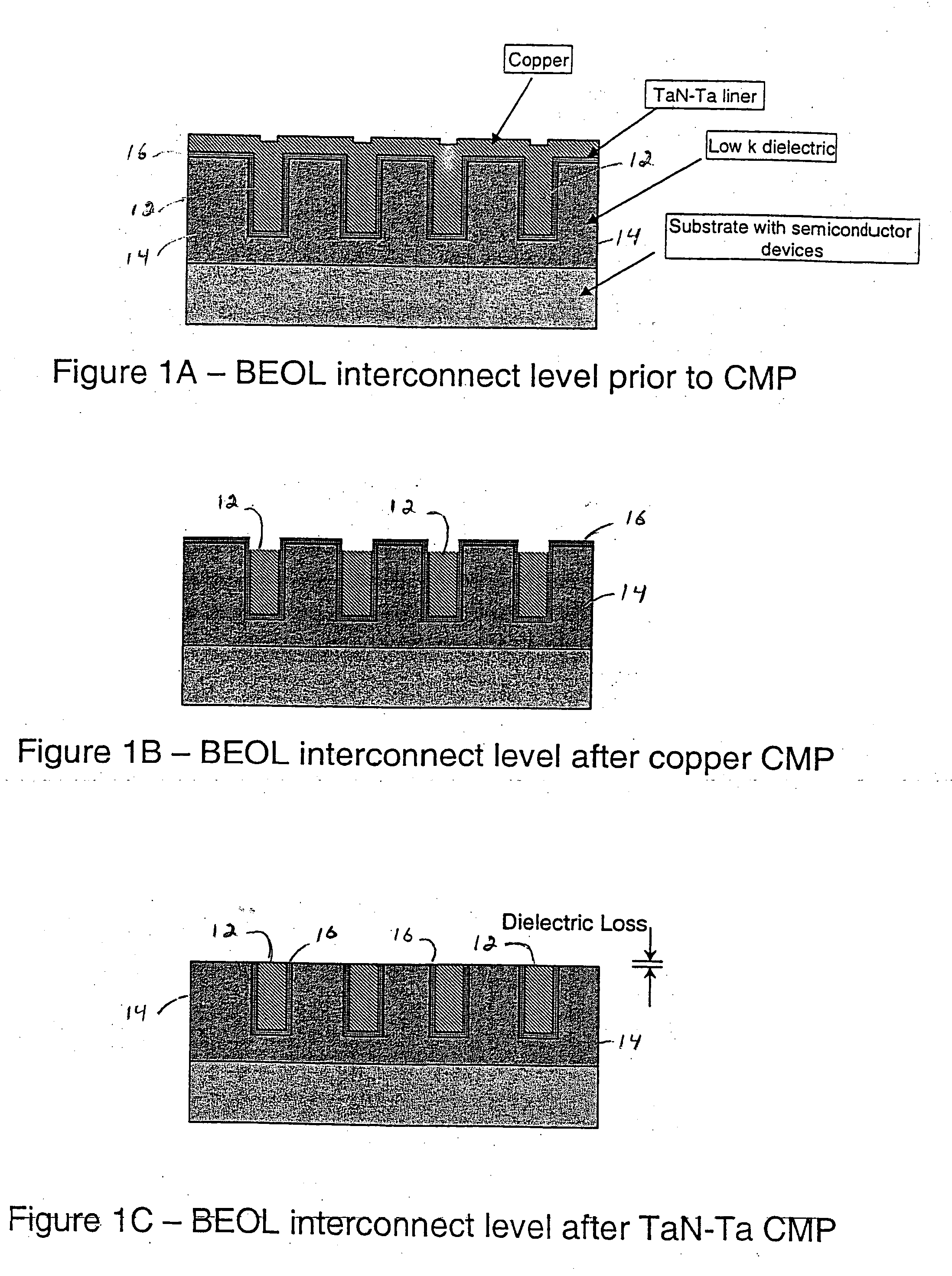Ta-TaN selective removal process for integrated device fabrication
- Summary
- Abstract
- Description
- Claims
- Application Information
AI Technical Summary
Benefits of technology
Problems solved by technology
Method used
Image
Examples
second embodiment
[0024] In a second embodiment, illustrated in FIGS. 4A and 4B, the XeF2 etch is used to remove a plating base required for selective metal cap 42 formation over the copper conductor 12. This process has been tested to show that only the plating base is etched and the metal cap 42 and surrounding dielectric 14 are preserved. Long XeF2 etch tests with cobalt based cap layers showed only a 7% sheet resistance increase which could be due to some impurity incorporation on the surface or a 7% thickness loss.
[0025] Furthermore, we have also tested the compatibility of XeF2 with copper and found that no etching occurs.
third embodiment
[0026] In a third embodiment, the XeF2 etch is used to remove the plating base / liner for a non-planar structure fabricated by through mask plating or by the combination of damascene and through mask plating. A high performance thick copper inductor is a typical example of a device that could be fabricated in this manner.
[0027]FIGS. 5A-5H depict the combined process flow that results in a non-planar structure, which renders plating base / liner removal by CMP impossible. In accordance with the third embodiment of the invention, the selective removal of the TaN / Ta plating base / liner can be done either directly after resist strip or following selective passivation of the exposed copper.
[0028]FIG. 5A shows a starting structure BEOL interconnect on a semiconductor device. More specifically, FIG. 5A shows a substrate 52 with semiconductor devices, dielectric material 54 on that substrate, and copper regions 56 embedded in the dielectric. TaN—Ta liners 60 separate these copper regions from ...
PUM
 Login to View More
Login to View More Abstract
Description
Claims
Application Information
 Login to View More
Login to View More - R&D
- Intellectual Property
- Life Sciences
- Materials
- Tech Scout
- Unparalleled Data Quality
- Higher Quality Content
- 60% Fewer Hallucinations
Browse by: Latest US Patents, China's latest patents, Technical Efficacy Thesaurus, Application Domain, Technology Topic, Popular Technical Reports.
© 2025 PatSnap. All rights reserved.Legal|Privacy policy|Modern Slavery Act Transparency Statement|Sitemap|About US| Contact US: help@patsnap.com



